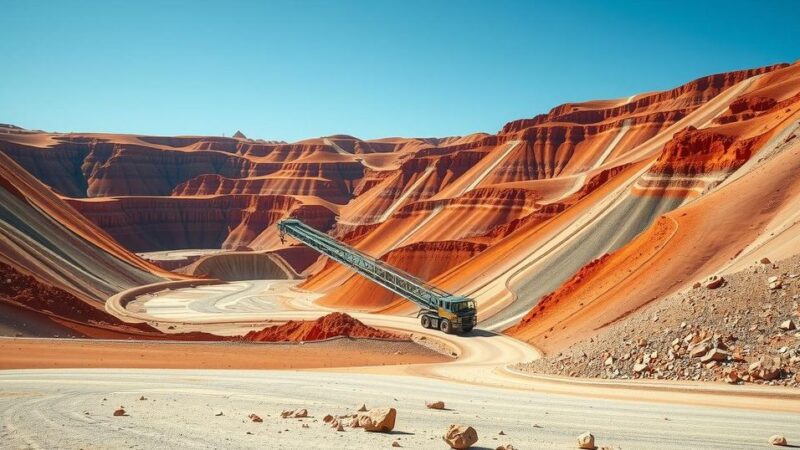Zhejiang Huayou Cobalt Co. and Tsingshan Holding Group Co. are collaborating with Kuvimba Mining House to develop a lithium project in Zimbabwe, investing $250-$300 million to construct a mining and processing facility. Despite falling lithium prices, they remain optimistic about future demand and profitability, projecting a significant recovery by 2026-2027 as Zimbabwe’s role in the lithium market strengthens.
Chinese mining companies Zhejiang Huayou Cobalt Co. and Tsingshan Holding Group Co. are advancing a lithium mining project in collaboration with Zimbabwean state-owned entity Kuvimba Mining House. This initiative comes despite a significant drop in lithium prices, which have fallen by nearly 90% since late 2022 due to an increase in supply that has not met anticipated demand for electric vehicles (EVs). Currently, the companies are conducting a feasibility study for establishing a lithium mine and processing facility in Sandawana, located in southern Zimbabwe. The CEO of Kuvimba Mining House, Trevor Barnard, noted that the total investment for this endeavor is projected to be between $250 million and $300 million with an expected production capacity of approximately 500,000 tons of lithium concentrate annually. Barnard expressed optimism for the future, believing that lithium prices will recover over the next few years, with a notable rebound anticipated by 2026 and 2027, which will shift the current production surplus into deficits. This collaboration highlights Zimbabwe’s increasing significance in the global lithium sector, particularly following its rise in prominence amid the price surge during 2021 and 2022. Despite the current low pricing environment, Barnard affirmed the project’s economic viability, underscoring confidence in its potential profitability even in the face of such challenges. While other African nations such as Namibia, Mali, Ghana, and the Democratic Republic of the Congo are also undertaking lithium mining projects, these initiatives continue to be relatively modest compared to developments in regions like the Americas, Australia, and Europe.
The demand for lithium has markedly increased in recent years, primarily driven by its essential role in the production of batteries for electric vehicles (EVs). This surge in demand spurred a global spike in lithium prices during 2021 and 2022. However, as new lithium supply came online, particularly from various global sources, price corrections ensued with a substantial decline observed since late 2022. Zimbabwe, endowed with abundant lithium resources, has emerged as a focal point for investment from Chinese companies seeking to secure resources for their domestic markets, a strategy aimed at mitigating supply risks amid changing market dynamics. The collaboration between Zhejiang Huayou Cobalt and Tsingshan with a local state company underscores the growing importance of partnerships in advancing mining investments in Zimbabwe.
In conclusion, the partnership between Chinese mining giants and Zimbabwean entities signifies a strategic commitment to lithium mining in the face of fluctuating market conditions. Despite the significant downturn in lithium prices, the anticipated recovery and the robust investment planned for the Sandawana project hold promise for both economic prospects in Zimbabwe and the ongoing global demand for lithium in the EV sector. The concerted efforts of these companies reflect the broader trend of growing mining activity in Africa, amid competition from other global resources.
Original Source: www.newzimbabwe.com







